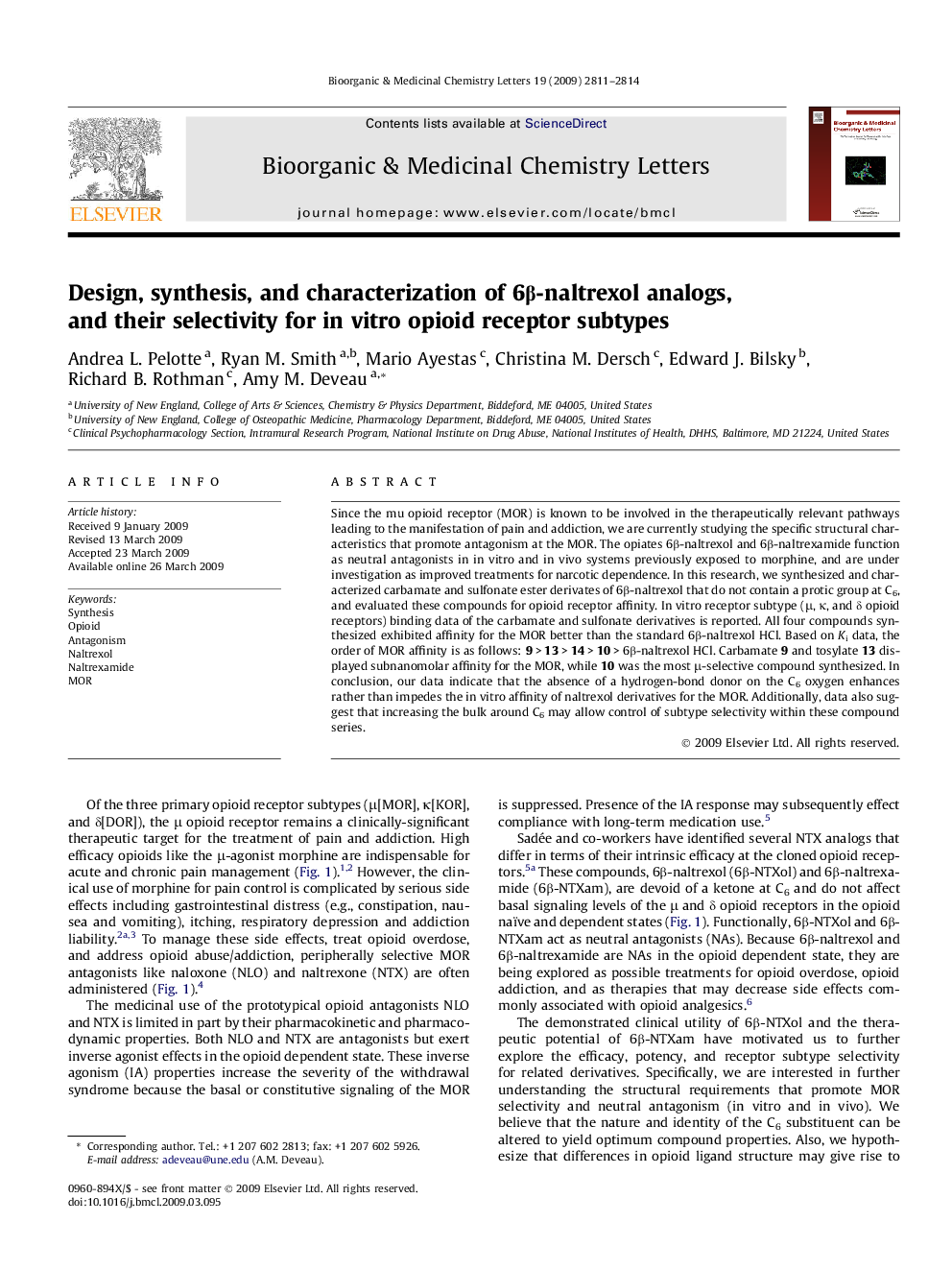| Article ID | Journal | Published Year | Pages | File Type |
|---|---|---|---|---|
| 1373922 | Bioorganic & Medicinal Chemistry Letters | 2009 | 4 Pages |
Since the mu opioid receptor (MOR) is known to be involved in the therapeutically relevant pathways leading to the manifestation of pain and addiction, we are currently studying the specific structural characteristics that promote antagonism at the MOR. The opiates 6β-naltrexol and 6β-naltrexamide function as neutral antagonists in in vitro and in vivo systems previously exposed to morphine, and are under investigation as improved treatments for narcotic dependence. In this research, we synthesized and characterized carbamate and sulfonate ester derivates of 6β-naltrexol that do not contain a protic group at C6, and evaluated these compounds for opioid receptor affinity. In vitro receptor subtype (μ, κ, and δ opioid receptors) binding data of the carbamate and sulfonate derivatives is reported. All four compounds synthesized exhibited affinity for the MOR better than the standard 6β-naltrexol HCl. Based on Ki data, the order of MOR affinity is as follows: 9 > 13 > 14 > 10 > 6β-naltrexol HCl. Carbamate 9 and tosylate 13 displayed subnanomolar affinity for the MOR, while 10 was the most μ-selective compound synthesized. In conclusion, our data indicate that the absence of a hydrogen-bond donor on the C6 oxygen enhances rather than impedes the in vitro affinity of naltrexol derivatives for the MOR. Additionally, data also suggest that increasing the bulk around C6 may allow control of subtype selectivity within these compound series.
Graphical abstractCarbamate and sulfonate ester derivatives of 6β-naltrexol were synthesized, characterized, and screened for in vitro binding to μ, κ, and δ opioid receptor subtypes.Figure optionsDownload full-size imageDownload as PowerPoint slide
